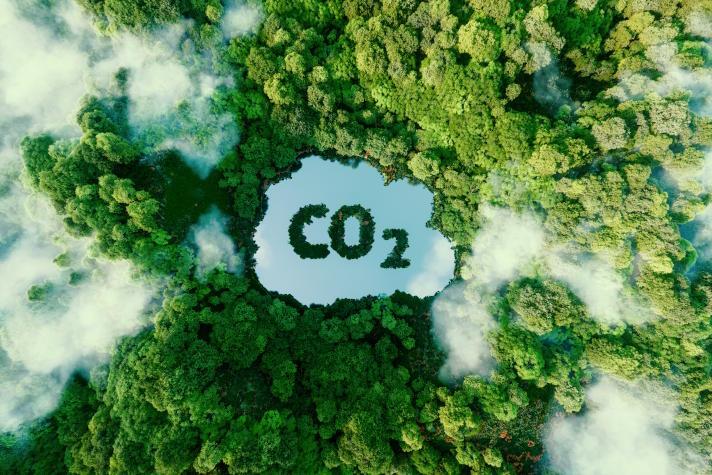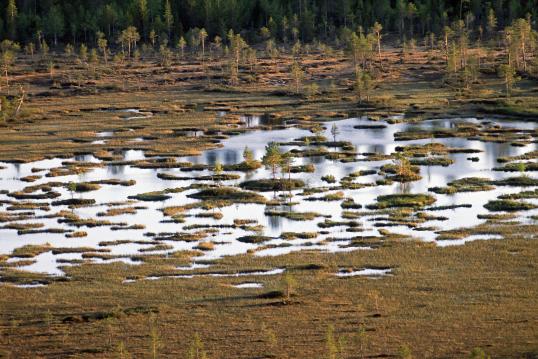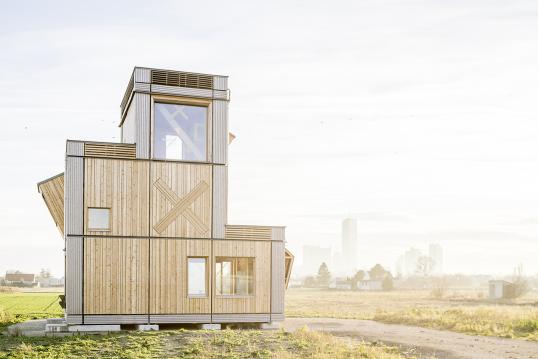
With 2022 ranked as one of the warmest years ever recorded, tackling climate change has become an even more pressing matter. This is nothing new for the EU which launched the European Green Deal back in 2019 to reach net-zero greenhouse gas emissions by 2050 and, in this way, make Europe the first climate-neutral continent.
But there’s a catch. Despite our best efforts, reducing our greenhouse gas emissions to absolute zero will be challenging. This is why, to balance out those emissions that are difficult to avoid, we need to capture some of the carbon dioxide (CO2) that is already out there and remove it from the atmosphere.
There are different ways to do it, for example by using nature or technology, or by storing carbon in products such as wood and other long-lasting materials.
So, how do carbon removals work, and how is the EU supporting different projects in this field?
Carbon farming, or the way of nature
Our land and forests can absorb large amounts of carbon. To help combat climate change, we need to keep our ecosystems in good condition and to adopt climate-friendly agricultural practices. With its LIFE programme, the EU is funding numerous initiatives helping Europeans do just that.
Peatlands – a type of boggy wetland – are huge reservoirs of carbon, host rich biodiversity and are natural flood defences. Over the last three decades, almost 400 LIFE projects have helped protect this endangered ecosystem across Europe. In Finland, for instance, the Hydrology LIFE project is restoring over 5,000 hectares of peatlands that were damaged by intensive forestry. As a result, they are now regaining their ability to store excess water, nutrients and carbon.
By using the right techniques, we can boost the capacity of our agricultural soils to also store carbon. The LIFE AGROMITIGA project is doing just that. Climate-smart farming practices such as “no tillage” – which reduces erosion by covering the soil with plant remains and prevents the CO2 stored in the ground from being released – are being promoted across Spain, Portugal, Greece and Italy.
Carbon capture and storage, or technology of the future
Using technology to remove carbon from the atmosphere has been drawing a lot of attention in the last years. With its Innovation Fund and Horizon 2020 – two of the world’s largest innovation funding programmes – the EU has been supporting such solutions across Europe.
In Stockholm, for instance, the EU is co-funding the addition of a Carbon Capture facility to a local heat and power biomass plant for the geological storage of carbon (BECCS). Upon completion in 2026, thanks to the novel combination of existing technologies, the facility will result in the net removal of some 800,000 tonnes of carbon per year – corresponding to the emissions required to produce some 4.8 million laptops – which the plant would otherwise release into the atmosphere.
In Iceland, the EU has supported the construction of a Direct Air Carbon Capture and Storage (DACCS) facility. Leveraging innovative technologies, the plant will capture 4,000 tonnes of carbon per year from the atmosphere – an equivalent of the emissions produced by heating an apartment with gas for 2,200 years – and store it underground in the form of carbonate minerals.
Locking carbon up, or sustainable design
But there’s yet another way. The Vivihouse project has developed a sustainable building system which – compared to conventional construction methods – can cut down resource usage and help remove CO2 from the atmosphere through carbon storage in wood and other long-lived and bio-based materials. This “do-it-yourself" construction system, composed of modular, prefabricated housing units, can reach up to six floors in height and can be easily dismantled and reassembled elsewhere. A three-floor prototype can store for decades about 15 tonnes of CO2, which is the equivalent of the emissions deriving from producing around 480 smartphones. This means the carbon is removed from the atmosphere for that period, or more exactly for the whole lifespan of the product.
Given the role it could play in the fight against climate change, the project was nominated as one of the finalists of the 2021 New European Bauhaus prizes – an international competition created by the EU to reward those projects and ideas which are turning the European Green Deal into reality.
New rules for carbon removals
First and foremost, we have to reduce our greenhouse gas emissions. But fortunately it is not the only tool at our disposal to tackle climate change. Carbon removals are an essential part of the package and need to be promoted and implemented on a much larger scale.
Aware of their potential, the EU is supporting the deployment of these solutions. However, as carbon removals is a dynamically evolving field and new projects are constantly set up, it is crucial to monitor and verify their quality. This is why last year the European Commission proposed its first ever voluntary set of rules to certify high-quality carbon removals and, in parallel, push the use of innovative techniques to capture and store carbon from the atmosphere.
By combining its emission reduction efforts with an increased use of carbon removals across different sectors of our economy and society, the EU is making sure that no resources are spared, and no solutions are discarded in our fight against the climate crisis.
Details
- Publication date
- 17 February 2023
- Author
- Directorate-General for Climate Action



